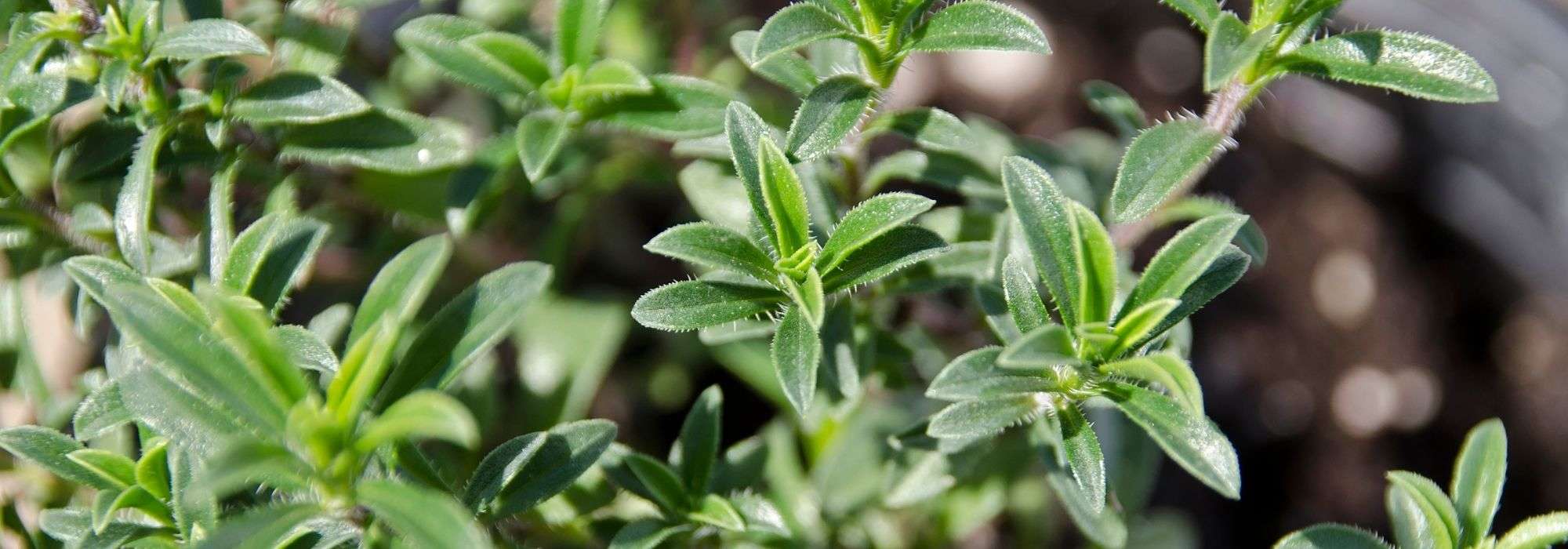
Savory: sowing, growing, harvest
Contents
Savory in a nutshell
- Savory is a culinary, aromatic, and medicinal plant, annual or perennial depending on the species.
- This herbaceous plant with pilous stems offers narrow, aromatic leaves with a peppery taste.
- In cooking, it is ideal for enhancing and seasoning both raw and cooked dishes.
- Its white to pink flowers are melliferous and consumed as an infusion.
- Easy to grow, it requires little maintenance and can be cultivated in the ground or in pots.
A word from our expert
Summer savory is an aromatic plant cultivated for over 2,000 years. Known since antiquity, it is grown for both its culinary qualities and its medicinal virtues, particularly for its ability to relieve insect bites and bloating.
Consumed fresh or dried, its narrow and highly fragrant leaves offer a peppery and spicy flavour. This spicy taste is widely used to flavour dishes of all kinds, salads, sauces, meats, and vegetables. A liqueur can be produced from its leaves, which can also be consumed as an infusion.
The genus Satureja includes several annual or perennial plants, depending on the species, including garden summer savory (Satureja hortensis) and mountain summer savory (Satureja montana). These two species are indeed the most common and well-known in our latitudes.
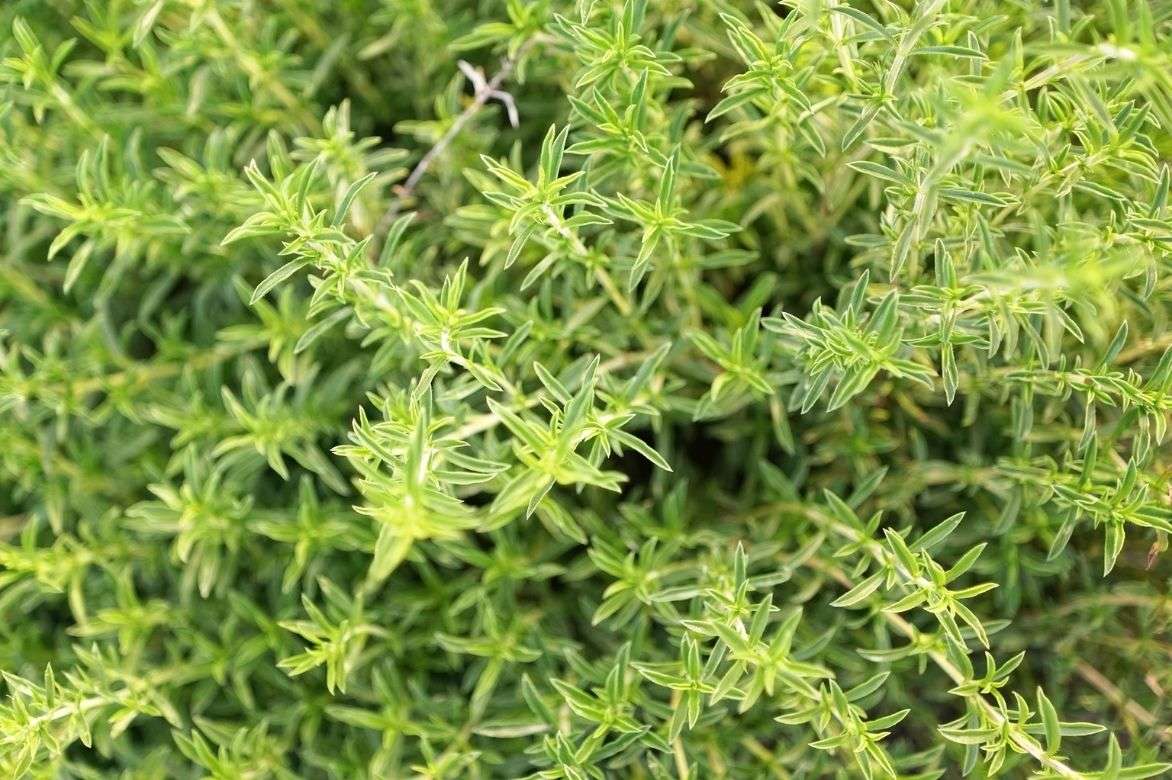
Aromatic foliage of summer savory
With a highly melliferous flowering, summer savory naturally finds its place in the vegetable garden, where it repels aphids and attracts pollinating insects. Besides the vegetable garden, Satureja can be grown in borders, beds, or rockeries. It can also be cultivated in containers, pots, or window boxes, making it suitable for balconies and terraces.
Easy to grow, summer savory is a low-maintenance plant that thrives in a sunny location. It prefers well-drained, rich, and dry soils with a tendency towards limestone. It is sown in spring and harvested throughout the summer until autumn.
Here are all our tips on this plant with a thousand culinary and medicinal virtues.
Description and botany
Botanical data
- Latin name Satureja
- Family Lamiaceae
- Common name Summer savory, horse pepper, Savory, Saint Julian's herb
- Flowering July to October
- Height 20 to 40 cm
- Exposure Sun
- Soil type Rich, light, dry and well-drained
- Hardiness 0 to -17°C
The summer savory, horse pepper, savory, sadrée, or Saint Julian’s herb, is an aromatic and culinary plant, annual or perennial depending on the species. It belongs to the Lamiaceae family, like mint, rosemary, sage, and thyme. Summer savory is also native to the Mediterranean region of Europe, the Maghreb, parts of Central Europe, Asia Minor, and the Near East.
The genus comprises about 150 species, the two main ones being garden savory, which is an annual plant, and mountain savory, which is a perennial undershrub.
- Satureja montana L., mountain savory, also known as perennial savory, is a hardy perennial down to -17°C that grows naturally in low mountains and arid areas of the South. It forms a low bush with highly branched, semi-woody stems. Very decorative, it features evergreen leaves and white tubular flowers.
- Satureja hortensis L., common savory, also known as garden savory, is an herbaceous annual plant and not hardy. It has lanceolate-linear leaves and small pink or white melliferous flowers. It is found spontaneously in the South.
Horse pepper is a bushy plant with hairy stems that typically reach between 0.20 and 0.40 m in height. Its stems can be woody or herbaceous depending on the species, bearing small narrow and elongated leaves, pointed at the tip, leathery and shiny. The leaves of Satureja montana are highly valued for their strong, spicy flavour, while the leaves of Satureja hortensis offer a peppery taste reminiscent of thyme.

Flowering of Satureja montana, Satureja hortensis and Satureja thymbra
Flowering occurs from June to October (depending on the species) and takes the form of small tubular flowers (tube-shaped) with a bilabiate corolla (which forms two lips) that develop in elongated clusters at the top of the stems, nestled among a few leaves. Depending on the species, the petals can be white, as in Satureja montana, or a pinkish colour, even lilac, as in Satureja thymbra, also known as Cretan savory. Highly melliferous, the flowering of horse pepper attracts bees and bumblebees to the garden.
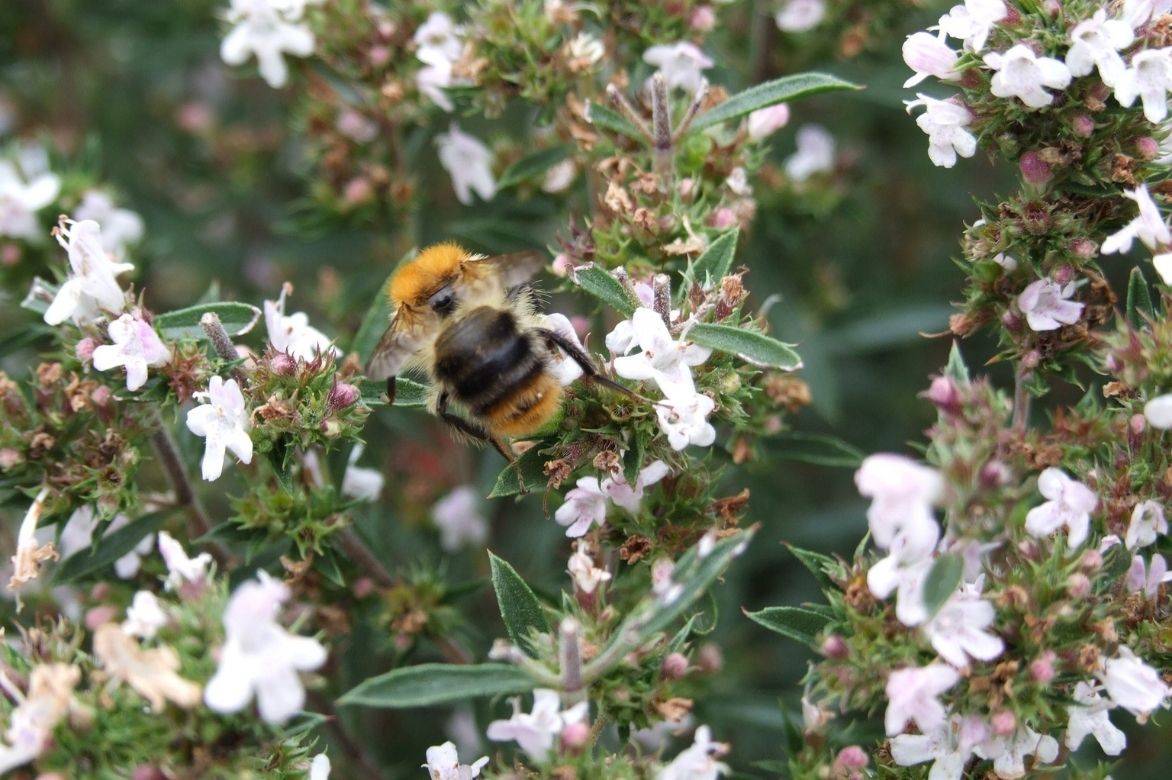
The flowers of summer savory are highly appreciated by pollinators
The leaves and flowers of summer savory also possess medicinal properties. They are both stimulating, antispasmodic, antiseptic, fortifying, and digestive.
“`
Read also
Thyme: growing, planting, pruningMain species and varieties
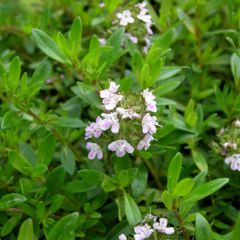
Satureja montana
- Flowering time June to November
- Height at maturity 35 cm
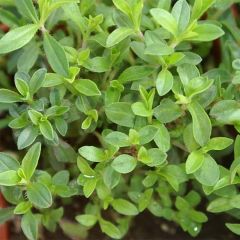
Organic Perennial Savory
- Flowering time July to October
- Height at maturity 35 cm
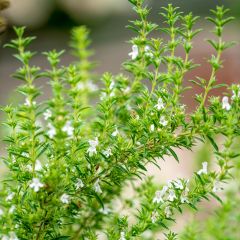
Satureja hortensis - Annual Savory
- Flowering time March to May
- Height at maturity 30 cm
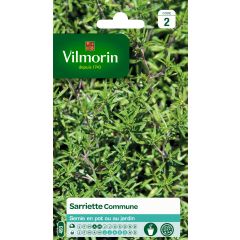
Common Savory - Vilmorin seeds
- Flowering time July to October
- Height at maturity 30 cm
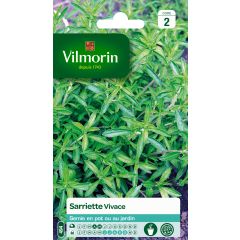
Perennial Savory - Satureja montana - Vilmorin seeds
- Flowering time July to October
- Height at maturity 20 cm
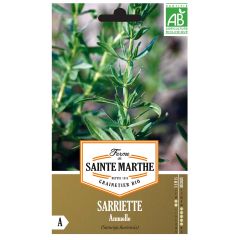
Organic Annual Savory - Ferme de Sainte Marthe seeds
- Flowering time March to May
- Height at maturity 30 cm
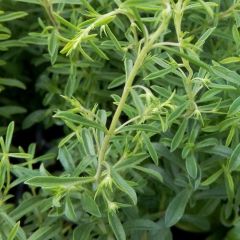
Organic Lemon Savory - Satureja montana citriodora
- Flowering time July to October
- Height at maturity 35 cm
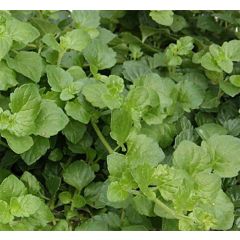
Satureja douglasii Indian Mint
- Flowering time July to September
- Height at maturity 15 cm
Discover other Summer savory
View all →Available in 1 sizes
Available in 1 sizes
Available in 2 sizes
Available in 1 sizes
Available in 1 sizes
Available in 1 sizes
Available in 1 sizes
Available in 1 sizes
Available in 1 sizes

Available in 1 sizes
Planting savory
Where to plant summer savory?
Hardy species of summer savory can withstand temperatures down to -17°C. Annual species, on the other hand, do not survive frost and must be removed before each winter to be resown each spring.
Summer savory, whether perennial or annual, thrives in sunny and warm conditions. It is best grown in rich, light, dry, and well-drained soil, even calcareous soil. However, it does not like clayey and overly compacted soils where it cannot flourish properly.
Summer savory is perfect in herb gardens and vegetable plots, where it repels pest insects, particularly aphids. It can also be used to adorn flower beds, borders, and rockeries. Satureja also adapts well to container, pot, and window box cultivation placed on a balcony or terrace, but always in sunny conditions.
When to plant summer savory?
You can plant our perennial summer savory plants sold in pots from March to May, and then from September to October, and harvest from May to October depending on the sowing.
How to plant summer savory?
In the ground
- Space Satureja montana plants at least 30 cm apart in all directions
- Plant summer savory in a sunny and warm spot
- Add coarse sand or gravel to the original soil
- Plant in a slight mound
- Mulch the base with a good layer of dead leaves
- Water and keep the soil moist without waterlogging
- Afterwards, water only in case of extreme heat
In pots
Grow summer savory in pots and sheltered in regions where conditions are both too humid and too cold in winter.
- Use pots with a diameter of 40 to 50 cm
- Plant in soft, well-drained potting soil
- Mulch with decomposed bark
- Water twice a day in hot weather
Read also
Create a spiralled herb garden.When and how to sow savory?
Summer savory seeds are sown from March to May for a harvest from spring to autumn (between May and October). You can sow the wild pepper directly in situ from April in the Mediterranean region. Sowing in open ground is possible in other parts of the country once all risk of frost has passed. Also, note that you can carry out sowing under heated cover from March.
Sowing under cover
Sow under cover in March for an early harvest as soon as May following the sowing.
- Sow in seed trays under a heated frame.
- Cover the seeds with a loose, well-drained substrate, made up of equal parts garden soil and river sand.
- Lightly firm this substrate.
- Keep the sowings moist until germination, but never waterlog them.
- Transplant the Satureja seedlings into open ground as soon as they reach about 3 cm in height.
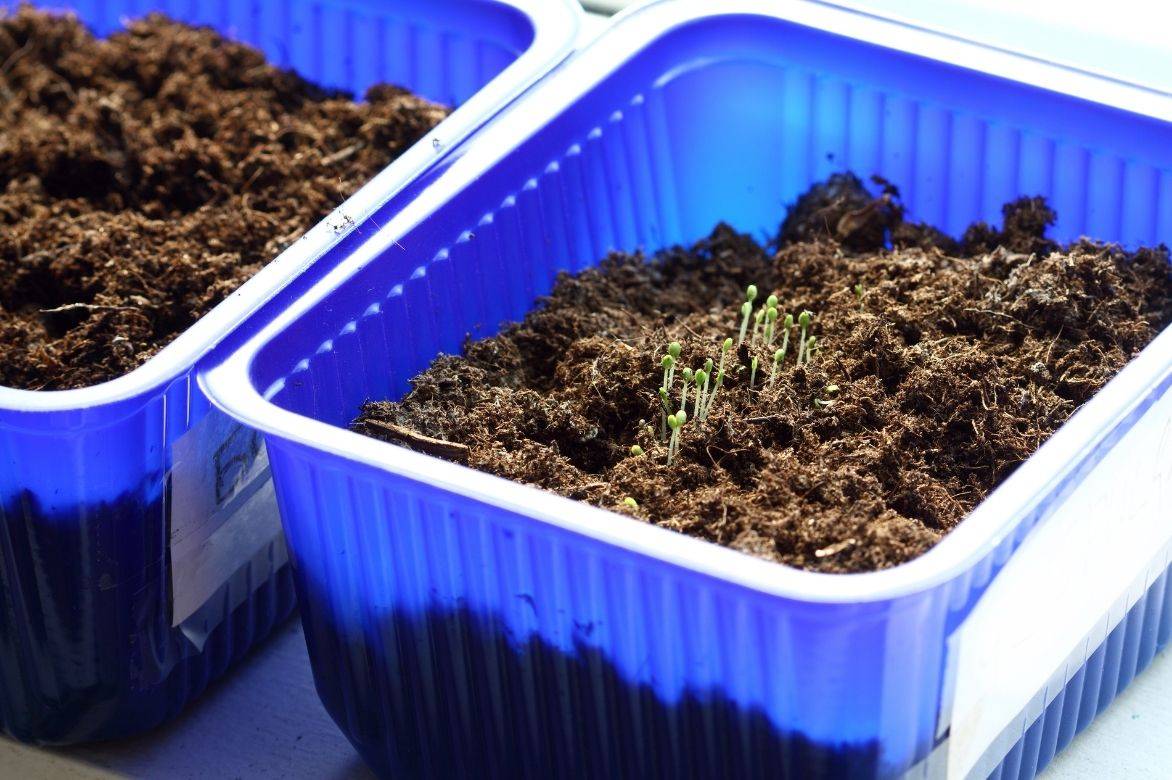
Sowing summer savory
Sowing in open ground
Wait until the soil is warm enough for your sowings in situ. Here, the temperature of the garden soil should be around 18°C to allow for germination.
Sowing in furrows
- Open shallow furrows using a hoe.
- Ensure your furrows are spaced 40 cm apart.
- Firm the bottom of the furrow with the back of a rake.
- Sow the wild pepper seeds in a line.
- Cover them with a light layer of soil.
- Water with a fine spray.
Sowing in beds
- Sow summer savory seeds broadcast on a levelled bed with a rake.
- Cover them with a thin layer of sieved soil.
- Lightly firm with the back of a rake.
- Water with a fine spray.
Sowing in pots
The wild pepper can also be sown directly in pots 40 to 50 cm in diameter.
- Sow in pots using clean, well-drained seed compost.
- Cover the summer savory seeds and lightly firm.
- Place the pots in a bright location.
- Mulch with decomposed bark.
- Water twice a day in hot weather.
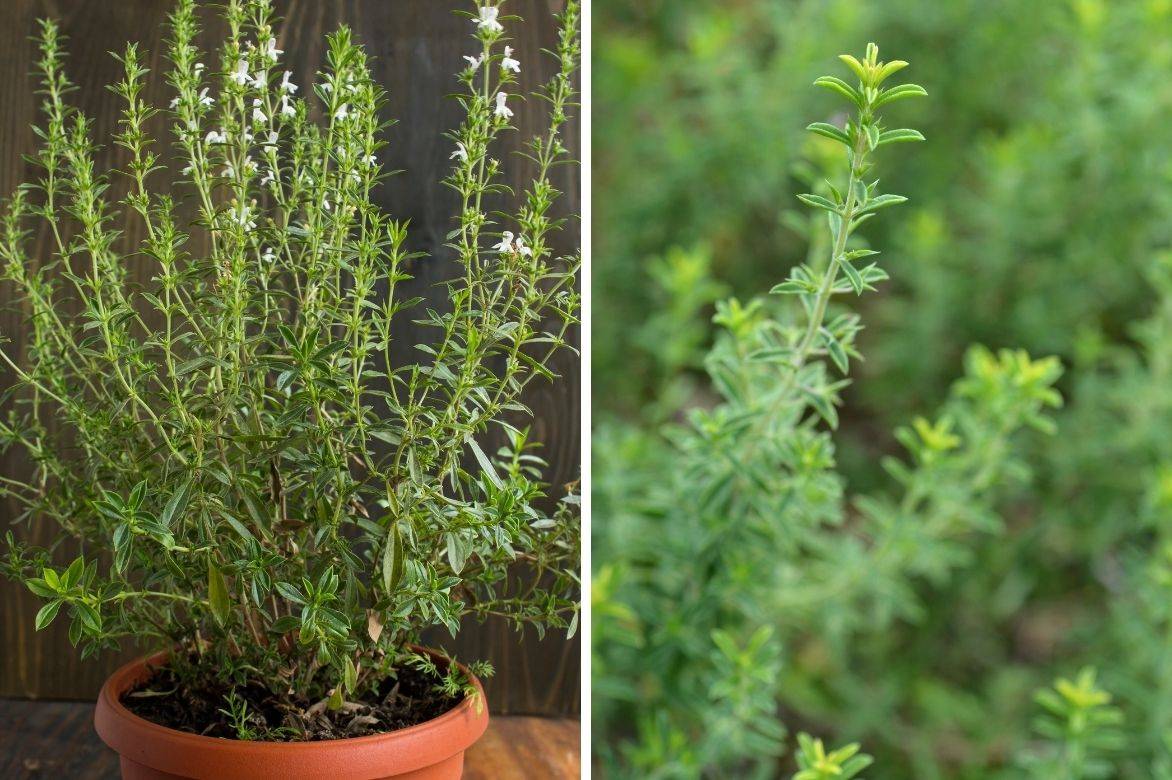
Mountain savory in a pot
Care
Savory, whether annual or perennial, is a plant that requires very little maintenance.
Maintenance of annual savory
Annual species do not require any particular care, except for regular watering to remain tender. They do not survive the first frosts. Simply pull up the faded clumps and proceed with new sowing in the following spring.
Maintenance of perennial savory
In comparison, mountain savory needs much less water than its garden counterpart. Indeed, Satureja montana only needs to be watered during hot weather, except when grown in pots, where it requires more watering.
Regular hoeing and weeding are necessary. Hoing involves loosening the top layer of soil around the plant, while weeding involves cutting unwanted herbs present in your crops with a hoe.
The clump of Satureja montana should be cut back to 10 or 15 cm at the beginning of each spring (in April) to maintain a compact shape. Before winter, cut the base of your perennial Satureja to about ten centimetres. Mulching can also be useful during very cold weather.
Plants of perennial savory should be replaced every 4 to 5 years. Indeed, clumps older than 3 years lose their fragrance.
Harvest, storage and use
Harvesting leaves
Leaves of the wild pepper are harvested from May to October (depending on the sowing) and as needed. Simply cut the stems using a pair of scissors. Note that it is preferable to harvest in the morning and before flowering to enjoy the full extent of its fragrance.
Storage
Savory leaves are best consumed fresh to fully appreciate their aromas. On average, wild pepper wrapped in a damp paper towel does not last more than 3 or 4 days in the vegetable drawer of a refrigerator. Ideally, consume them immediately after picking.
If you wish to store them for longer, you can dry the leaves before placing them in airtight jars. Harvest them in July or August on dry, sunny days. Place the savory stems on trays or let them dry in the shade in wooden crates covered with newspaper. Satureja can be stored this way for at least 8 months.
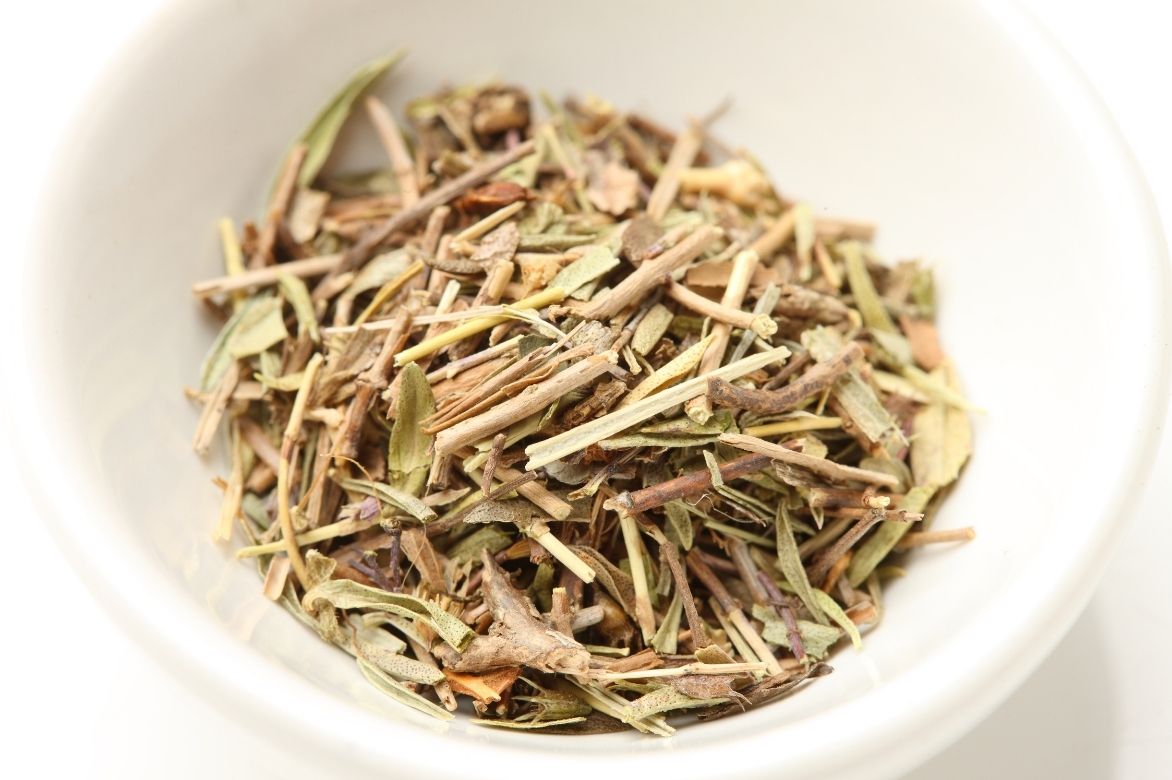
Dried savory leaves
It is also possible to freeze savory leaves. Finely chop a few leaves and place them in an ice cube tray. Then cover them with olive oil before placing them in the freezer. This way, you can use your frozen aromatic cubes as needed in your recipes.
Uses
- In cooking
Savory leaves are primarily used to enhance the flavour of salads, grilled dishes, vegetables, and sauces. They pair particularly well with legumes, as they aid digestion and help prevent bloating for those who consume them.
Wild pepper is used in savoury dishes as well as in sweet recipes. Chopped leaves can, for example, be sprinkled on a crumble or added to your apple compotes.
Savory is also perfect for marinating meats, tofu, or vegetables for grilling on the barbecue. However, be careful not to use too much, as its flavour is quite strong.
- Medicinal properties
The medicinal properties of savory have been known since antiquity. The essential oil of Satureja montana, extracted from its leaves, has notable anti-infectious and antibacterial qualities. It acts as an immune stimulant and a general tonic.
Consumed as an infusion, it has proven digestive and carminative properties. It aids digestion, soothes digestive spasms, and alleviates stomach aches. It is ideal for gas, bloating, or even diarrhoea.
Satureja is also an antiseptic and antiviral herb used very effectively against colds and sore throats. It is also used as a remedy for fatigue, to relieve rheumatic and muscular pain, and to alleviate symptoms of anxiety and distress.
Used fresh in poultices, the leaves of savory help calm skin irritations, particularly those caused by insect bites.
Finally, it is said that Satureja hortensis has aphrodisiac properties.
Warning: prepared as a herbal tea or liqueur, savory is not recommended for individuals with high blood pressure.
- In the garden
Savory emits an aroma that disrupts unwanted insects, such as aphids, carrot and leek flies, or even cabbage flea beetles. Savory manure is also used preventively to protect the vegetable garden and garden from these pests. This manure is also effective in combating fungal diseases*.
*Fungal diseases, also known as cryptogamic diseases, are caused in plants by a fungus or another filamentous parasitic organism.
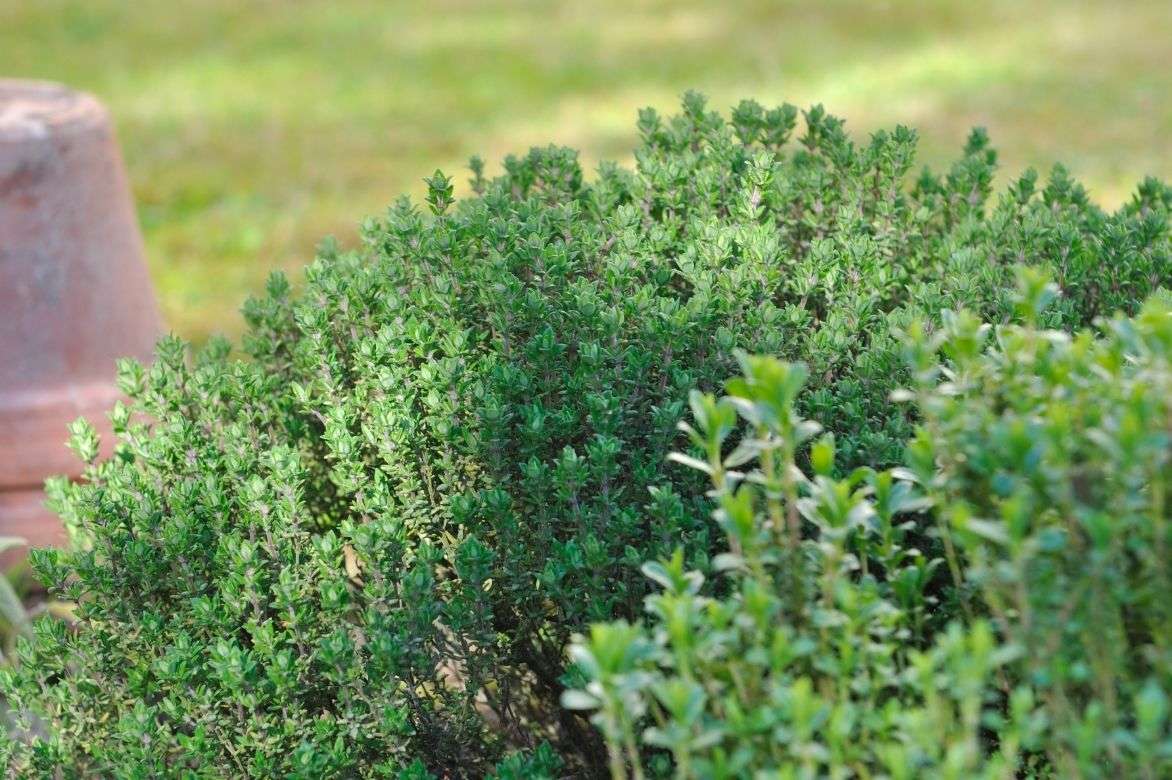 Clumps of thyme and savory in the garden[/caption>
Clumps of thyme and savory in the garden[/caption>
Diseases and potential pests
Elephant garlic is a plant that benefits from good resistance to diseases. It is also avoided by the main pests that cannot stand its aroma.
Young plants of Satureja can however be nibbled by slugs and snails. The latter attack the young plants at night during damp periods. To protect them, surround them with wood ash or crushed egg shells.
Certain caterpillars of lepidopterans may eventually target your young plants of savoury.
Propagation
As we have seen previously, the propagation of summer savoury is done by sowing in spring. You can sow seeds collected from the plant, or choose from our seeds. Summer savoury seeds retain their germination abilities for 5 years.
However, perennial summer savoury can also be propagated by division of clumps and by cuttings. These propagation techniques are not feasible for annual summer savoury.
Division of clumps of Satureja montana
Divide the clumps in April.
- Do this when the soil has been moistened by spring rains.
- Choose a healthy plant.
- Lift the stump using a garden fork.
- The lateral shoots should be unearthed.
- Cut the shoots with a knife or a flat spade.
- The offsets should measure at least 10 cm by 10 cm.
- Replant the divisions from the old clumps immediately in soil enriched with well-decomposed compost.
- Water thoroughly to settle the soil.
Propagation by cuttings of perennial summer savoury
The cutting of semi-lignified stems* occurs in late spring or in August.
- Do this in the morning when the seedlings are full of morning dew.
- Choose vigorous shoots that are between 10 and 15 cm long.
- Cut them with a sharp pruning shear.
- Plant them in a pot filled with a mixture of half garden soil and half river sand.
- Lightly firm the soil around the stem.
- Place your Satureja cuttings in the shade and sheltered from the wind.
- Water to ensure good establishment.
- Allow between 12 and 14 months for the cuttings to root.
- Once well-rooted, plant them in the ground, in borders or in rows.
*Semi-lignified stems are those that have grown in spring and begin to lignify (turn into hard wood) from July to August.
Pairing savory
Savory can be planted easily alongside cabbages, turnips, radishes, carrots, lettuces, squashes, beans, and beetroots.
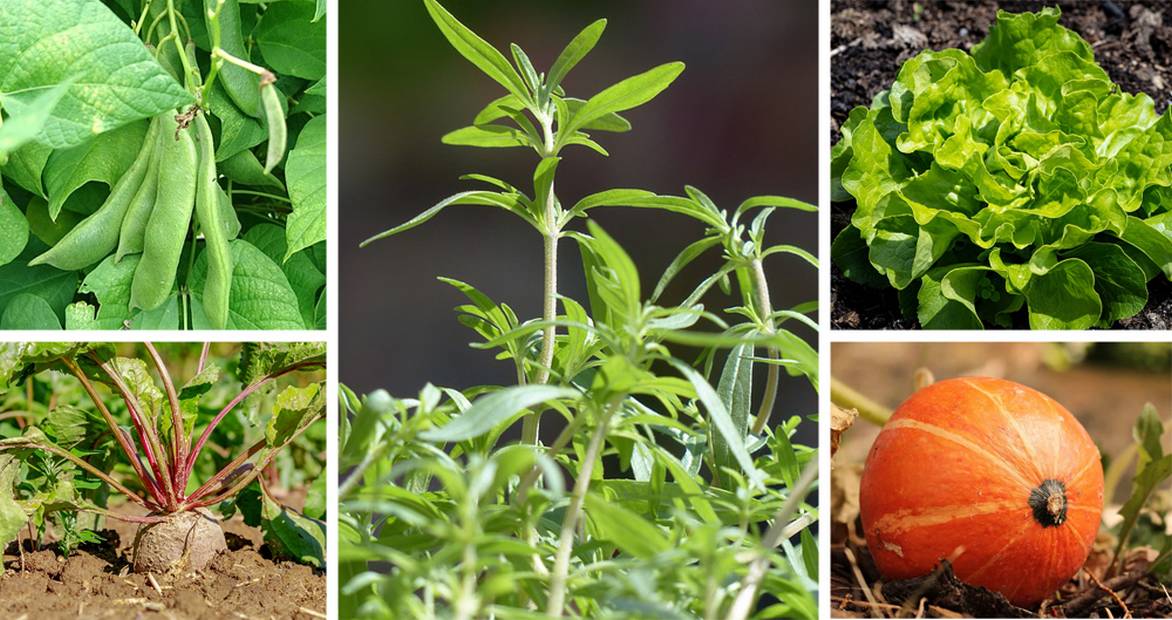 An example of association with beans, beetroot, salad, and pumpkin
An example of association with beans, beetroot, salad, and pumpkin
Feel free to plant your bear’s pepper in the middle of your perennial beds or sunny rockeries.
Their presence near the vegetable garden or perennials helps to deter insects that may attack the most sensitive plants. Not only does savory repel their enemies, but it also enhances the flavour of beans.
Useful resources
- Discover our wide range of summer savory, available as young plants or seeds
- Explore our selection of herb seeds to season your dishes according to the season!
- Also find our collection of 15 medicinal plants to treat all your minor ailments!
- Follow our tips and successfully achieve your sowing of aromatic plants every time!
- Discover all our varieties of beans, perfect in combination with summer savory!
- Discover 8 aromatic plants for Mediterranean cuisine
- Subscribe!
- Contents
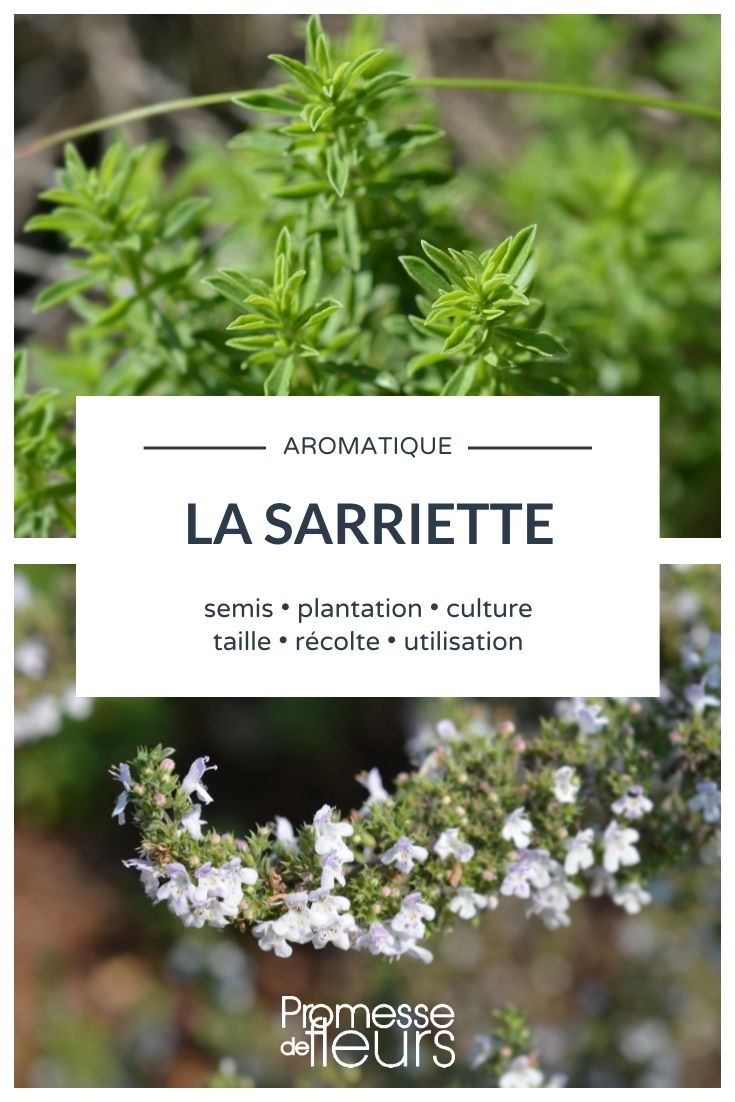


































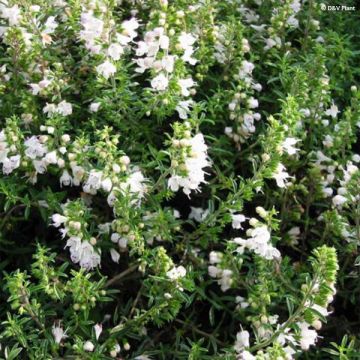




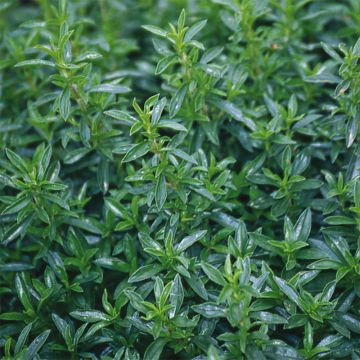
Comments